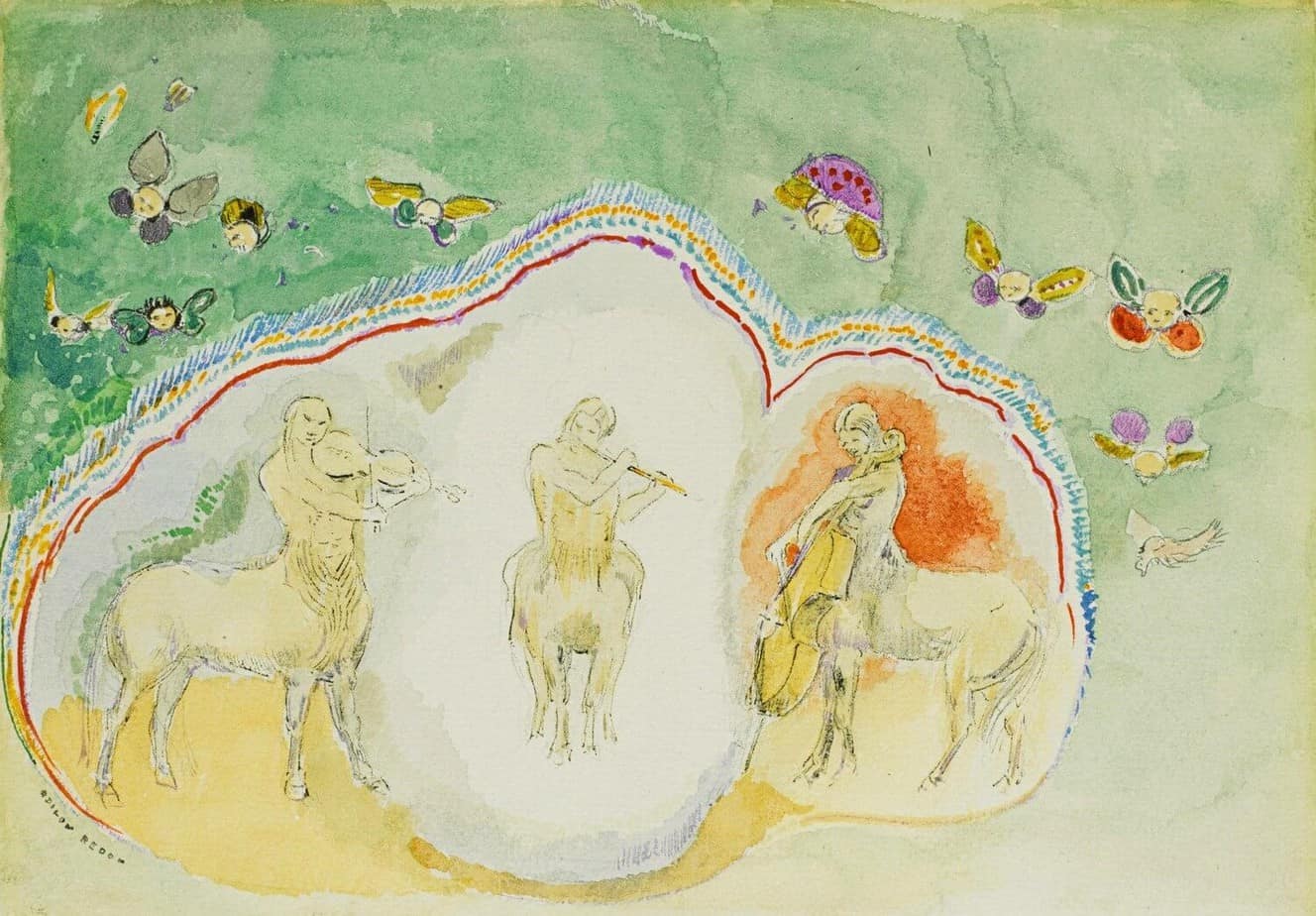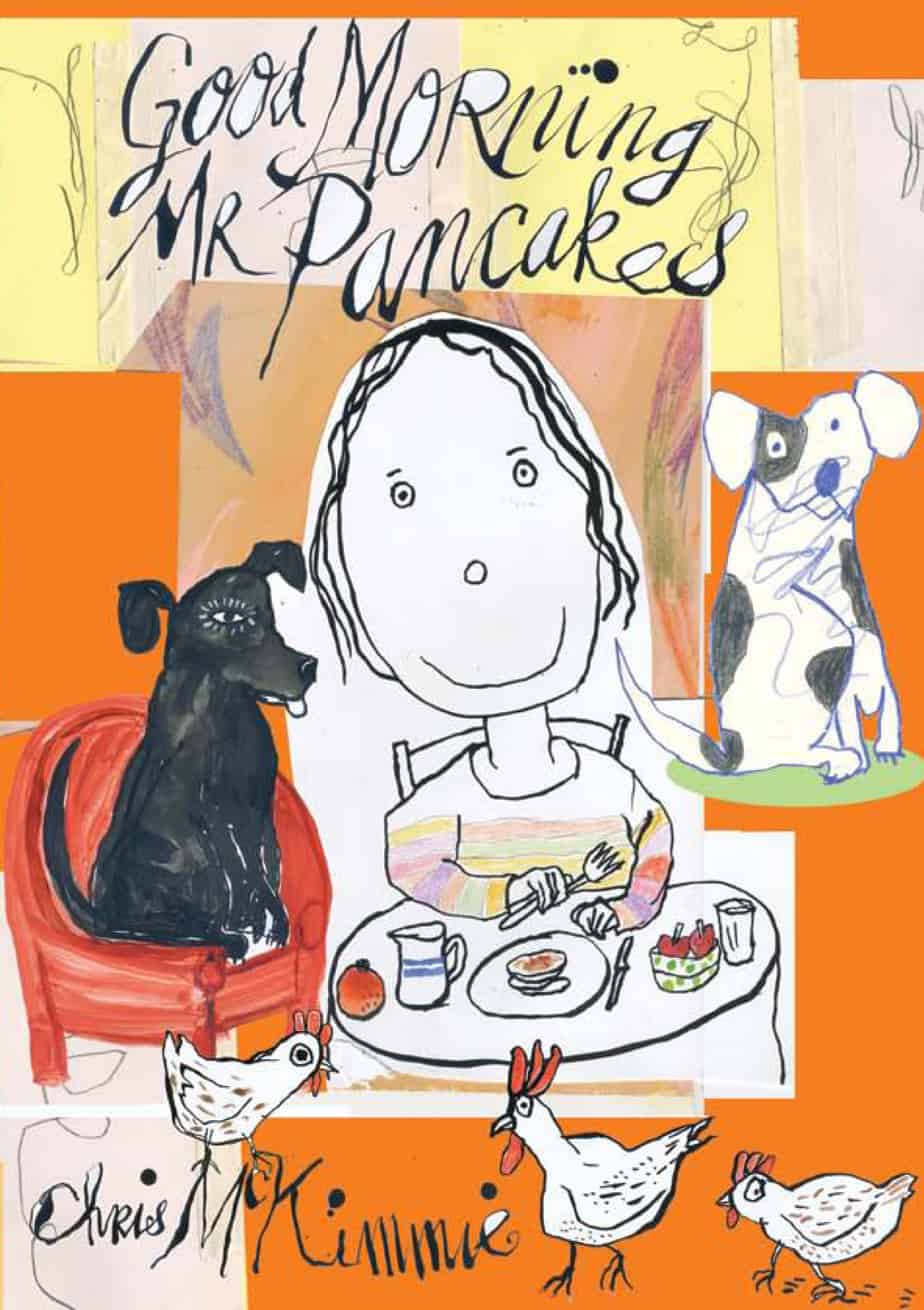I first heard of Australian author illustrator Chris McKimmie on Children’s Books with Kate De Goldi.
One of the secrets to success as an illustrator is having an instantly recognisable, one-of-a-kind style. McKimmie’s various book covers will give you a glimpse of his style.
The naive style of art also works really well to encourage children in their own illustration. The Dog Man series by Dav Pilkey, and the treehouse books by Andy Griffiths and Terry Denton do the same thing. Kids look at these pictures and think, you know what? I can do that. It doesn’t have to be realistic. Realistic art is sometimes confused for ‘good’ art.
Art is ‘good’ when it makes its audience feel something. That’s the only criterion. In picture books, art also tells a story.
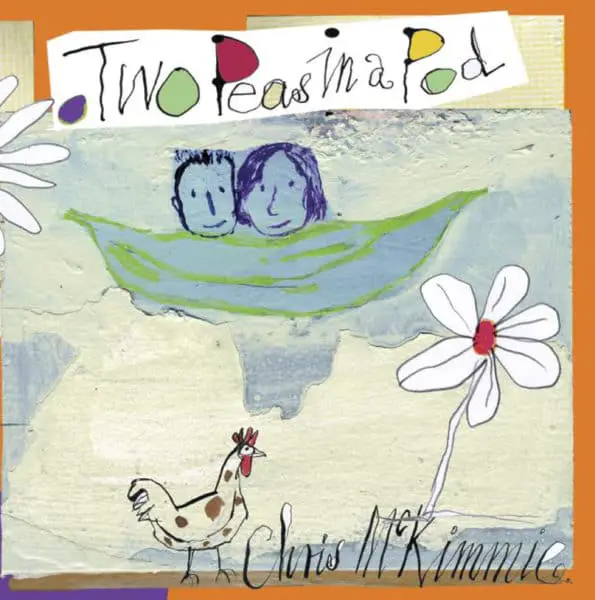
McKimmie is himself trained in graphic design. Moreover, McKimmie’s wife is a book designer.Assuming pillow talk, that’s an indication as to the deceptively naive graphic design going on in his work. Graphic design knowledge plus free-style, expressive, naive art = greatness in picture books. (His wife Jackie is also a writer and they collaborate at times on solving plot problems.)
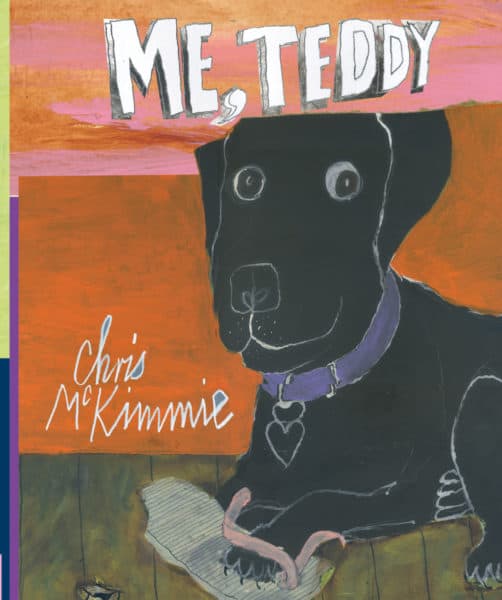
McKimmie started his career in the 1970s. Since then he has been a cleaner, a graphic designer, lectured in illustration at the Queensland College of Art, been a stay-at-home dad and an exhibiting painter. Freshly inspired, he came back to creating picture books when he had his own grandchildren.
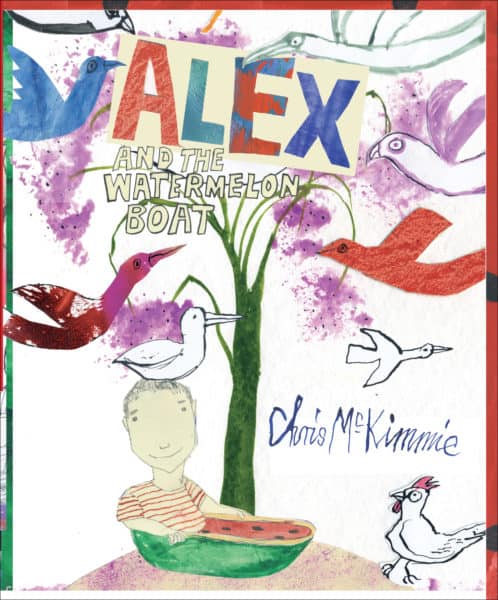
His handwritten font looks like the careful ‘running writing’ of a child trying to do their neatest work. The intratext often includes asides which we assume to come from adults watching on.
Crikey and Cat is a landscape book, which requires different layout skills.
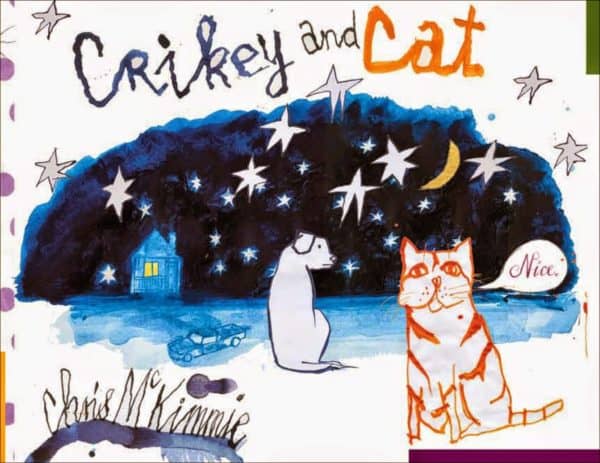
Kate de Goldi says “there’s nothing electronic about his work”.
I know exactly what she means, but as someone who illustrates digitally, I can tell you, there’s art created on computer/tablet now and you would not know it from real media. Software such as Rebelle is a good example of the digital art software revolution, which has only really levelled up in the last couple of years.
I knocked up the following on my iPad using Procreate to see if I could emulate the real-world media feel achieved by Chris McKimmie. It’s the owl from the back cover of Good Morning, Mr Pancakes:
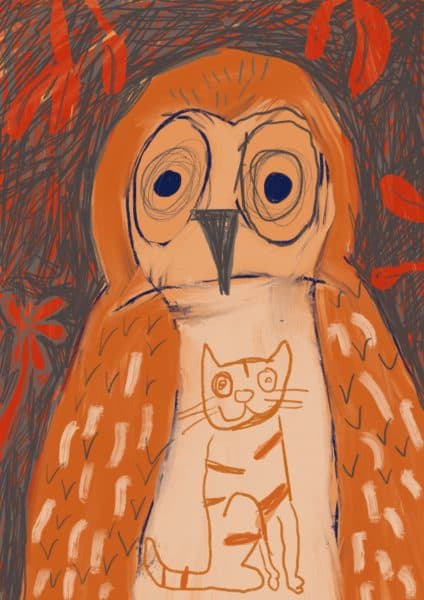
Brian Banana Duck Sunshine Yellow is one of the more popular of Chris McKimmie’s picture books.
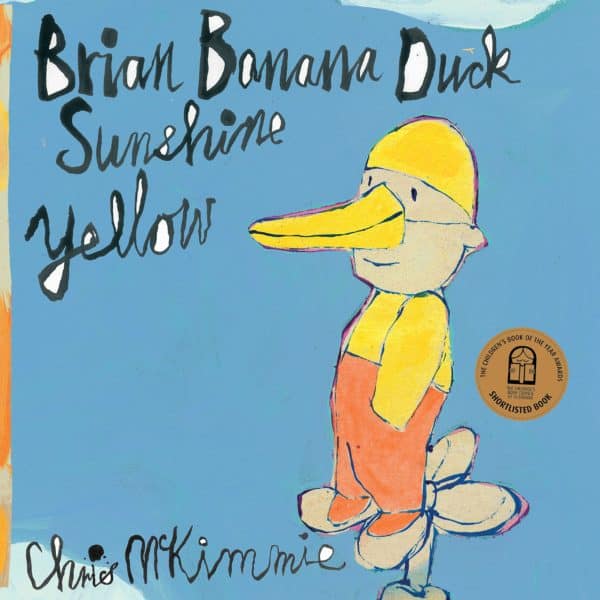
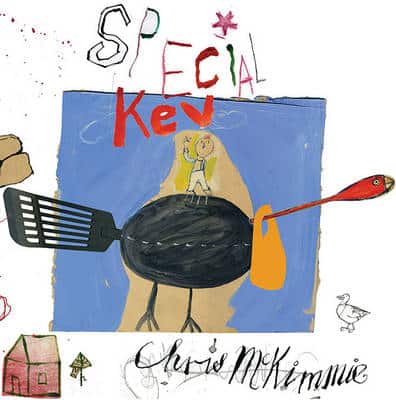
The illustrations are deceptively naive. They look like they’re being thought of on the page, evoking childlike renderings on paper. McKimmie has re-channeled his inner child after a lifetime of experience as an adult illustrator.
Perhaps his style is best described as ‘naive collage’. He makes much use of washes and dye. Collages comprise scraps of paper, rips, tears, folds, borders which seem to be the drawing surface underneath, pencil/crayon/felt pen sketches. Characters are drawn with a minimalist level of detail, which has the advantage of allowing the child to see themselves in the characters on the page.
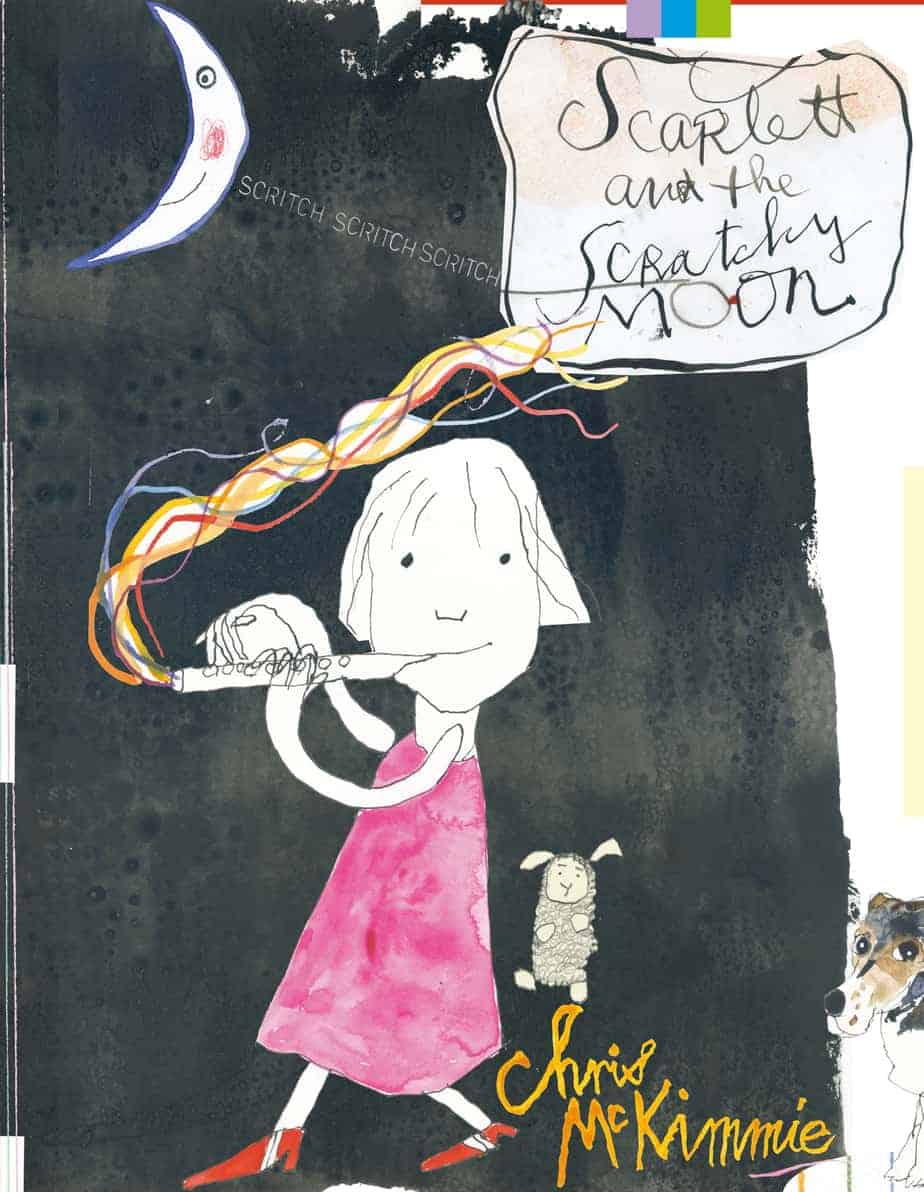
McKimmie’s Strengths
- He is adept at not only channeling kids, but also at channeling kids using adult language. Alongside all the child’s immersion in her own world is all this verbiage floating in the air from the adults.
- The adult language is often presented as intratext coming from an adult who stands out of the frame (not seen).
- In Good Morning Mr Pancakes, McKimmie uses direct quotes from his grandchildren, making use of ‘found language’. If you are proximal to young kids (age 3-7 is great) sit down and really listen to what they come out with. This is obviously what McKimmie has done.
- Not all author illustrators design their own books. A book designer generally comes in. But McKimmie has the skills to do all three, which affords perfect integration.
- His stories are joyful, full of hilarity, except when deliberately sombre. (Lara of Newton is about a cat abandoned at Christmas. The cat is given as a Christmas present, which is where most picture books might end, but this cat is abandoned again.) Some of the humour is distinctively Australian, I expect. (In Good Morning Mr Pancakes, one of Larry’s chooks is called ‘Steggles‘, which is a local brand of frozen chicken.)
- Across the entire work McKimmie preserves perspective of the young eye. For instance, things collide with each other on the page. He’s the most persuasive writer and illustrator using the child’s eye view that de Goldi has seen in 30 years of reviewing children’s books.
- McKimmie is very good at taking small but important childhood moments and anxieties. (We see the pets from Good Morning Mr Pancakes in a later book, in which the pets have died. The mood in thatnext one is elegiac and a little scary, but gentle. McKimmie understands that small losses loom big in children’s lives.)
- He steps across the real into surrealism, as children do. (‘Surreal’ refers to ‘super real’ art which tells us a super-real truth.)
- He elides all the ‘connective tissue’ in stories (which de Goldi finds boring anyway, she says). In other words, there’s no clear bridge between events — he uses a kind of picture book version of stream-of-consciousness.
- He is an illustrator’s illustrator. Other author/illustrators such as Sue deGennaro count his books among their favourite.
STORY STRUCTURE OF GOOD MORNING MR PANCAKES
McKimmie’s stories are ‘simple’ and ‘wacko’ As de Goldi puts it, he doesn’t write ‘what happened next’ stories. I’m interested in looking a bit more closely at that, because there are two main types of picture books:
- You can easily pick the seven step story structure.
- The story is carnivalesque.
There may be something else I can add to my binary classification. Maybe I just haven’t seen it yet… Do Chris McKimmie’s books create their own genre?
After looking very closely at the structure, I conclude that Good Morning Mr Pancake is a combination of both. I had no trouble picking out the seven step structure, which dips into carnivalesque mode after the Plan stage.
Kim Hill suggests an adult might find his books somewhat enigmatic and cryptic. De Goldi responds that these are books which need to be read slowly. There’s a ‘vertical profundity’ — you have to sit with a child, look hard and read (though without effort). Reading McKimmie’s books is an absorptive process. Collage and controlled chaos.
Her shortcoming (of not noticing) is revealed on the first double page spread, when an adult (off page) yells BEE THE TOAST IS BURNING.
SHORTCOMING
Bee is going on a fun holiday but she’s anxious about how the pets will get on without her to look after them. So she has to go through these rituals before she can look forward to her time away.
There’s ironic distance between animal-loving Bee’s stream-of-consciousness concern and the words coming out of the animals. Bee lacks true empathy, thinking, for instance, that the dogs are going to love the dog motel. (The dogs themselves are dreading it.) I imagine she thinks the chooks enjoy having their ‘toenails’ painted as much as she enjoys painting them.
This childlike concern for pets feels very familiar to me. In their wish to involve pets as characters in their imaginative play, pets sometimes become mild victims.
DESIRE
Bee wants all the animals to be waiting and safe for her when she and they get back.
But she also wants to have fun getting them prepared for everyone’s holiday. Getting ready is a game in itself. She imagines the fish is going to be minding the house. She imagines her toy leopard has to stay behind because she is ‘too wild’ to be allowed on holiday.
OPPONENT
Because the pets are animals, and though they can ‘talk’ they have the sensibilities of actual animals, there’s a natural opposition between their desire to be left alone and young Bee’s desire to ‘love them to death’ with care and attention.
PLAN
- Bee paints the chooks’ toenails so they don’t get mixed up with the chooks they’re going to be staying with.
- She packs bags for the dogs and cats. (Some treats and a ball of string.)
- She provides Gregor with enough greens for a whole week. (Gregor is a caterpillar and needs zero help munching his own leaves, if only he were left alone.)
BIG STRUGGLE
In place of a Battle, in common with carnivalesque picture books, Bee slips fully into her imagination. She hasn’t gone on holidays yet, but she imagines how the holiday will be.
- McKimmie is using the trick of hyperbole when Bee imagines ‘ten hundred turkeys’ on her island.
- Bee is utilising the tall tale tradition when she tells us/herself that one of them sleeps at the end of her bed.
- The most carnivalesque part of her imaginative holiday on the island: she is allowed to do what she wants. This includes drinking out of large puddles and licking her bowl. She has mentally aligned herself with her pets; she is now an animal herself. Bee is now removed from the picture. All we see are turkeys.
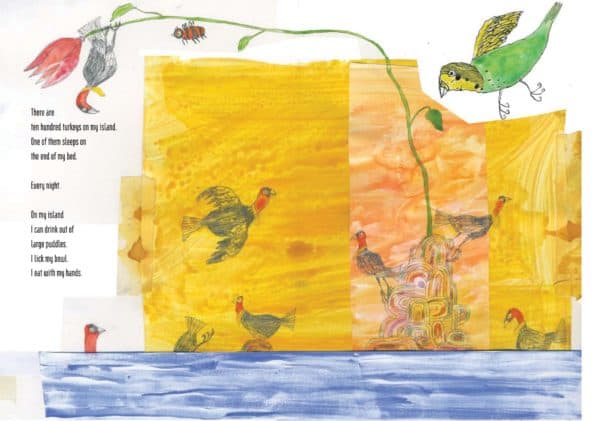
- When Bee watches spiders writing on a red sky, McKimmie has slipped into dream territory.
- He inverts girl and dolphin on the following spread, when Bee says ‘beep beep peep’ and the dolphin replies in English. This is ‘hat on the dog’ inversion humour, popular with preschoolers especially. This scene also continues the thread in which Bee imagines she swaps places with animals.
- The fish talking to each other under the water is an excellent example of what de Goldi means when she says McKimmie is great at channeling adult language, but through children.
- This carnivalesque escapade also contains elements of classic mythic structure, similar to Where The Wild Things Are by Maurice Sendak. For example, she eventually meets up with a crab (called Mr Sidewalker), who is playing the role of the mentor, as described by Joseph Campbell (transliterated more simply much later by Christopher Vogler).
- The journey gets kind of mystical when Bee imagines all the holes she can climb into and out of again.
- Eventually she lands into an Alice’s Adventures In Wonderland sort of scene, in which she’s sitting at an outdoor table eating cake, cheese and fruit with a Bee (her alter ego) and a turkey.
The carnivalesque sequence is apparently a story told by one of McKimmie’s grandchildren. He has incorporated that story into a wrapper story.
ANAGNORISIS
Eventually, after eating, Bee imagines herself sailing, sailing home across the sea.
She must have realised that whatever happens on her trip, it will probably be fun, and it will involve coming back home again. Therefore, so long as she prepares (including mentally), she has nothing to worry about.
NEW SITUATION
Once home, Bee imagines greeting each of the animals by name. This spread is reminiscent of Goodnight Moon in that it seems to be a chant designed to reassure herself that nothing is going to change.
The dogs didn’t like their holiday, but the caterpillar has turned into a butterfly — a metaphor for how Bee herself has grown, all over the course of an imaginative trip to precede a real one.
The final sentence, “It’s like starting the world all over again” is apparently a real line from McKimmie’s 8 year old grandchild.
COMPARE WITH
McKimmie’s art style reminds me of paintings by Odilon Redon.
